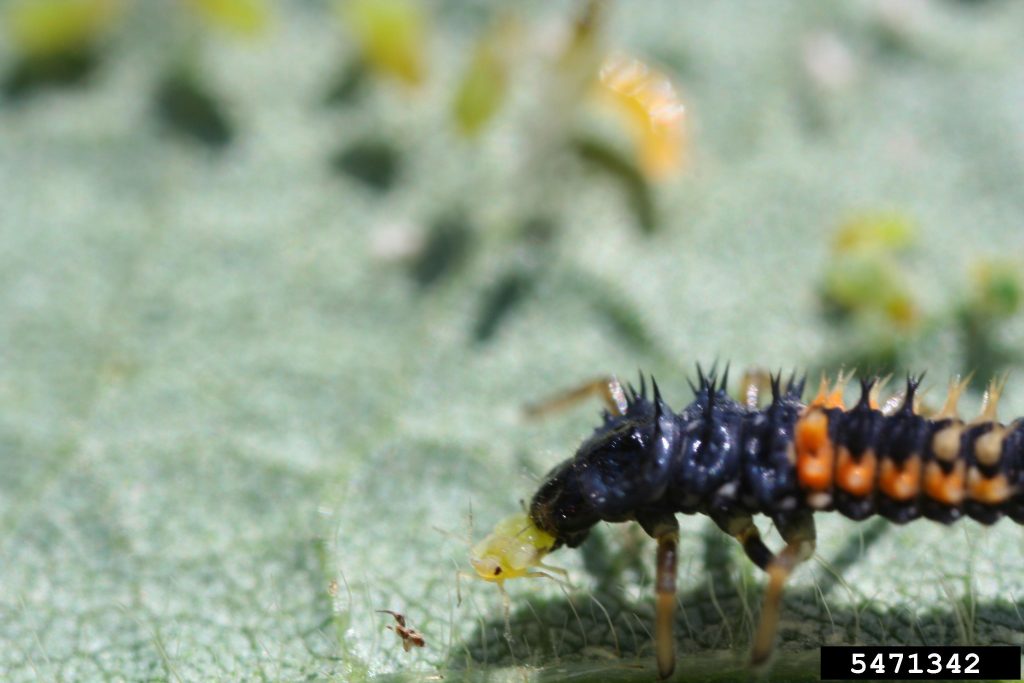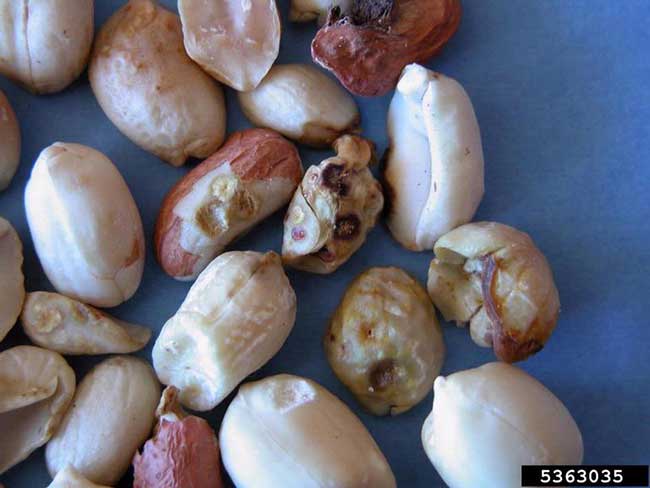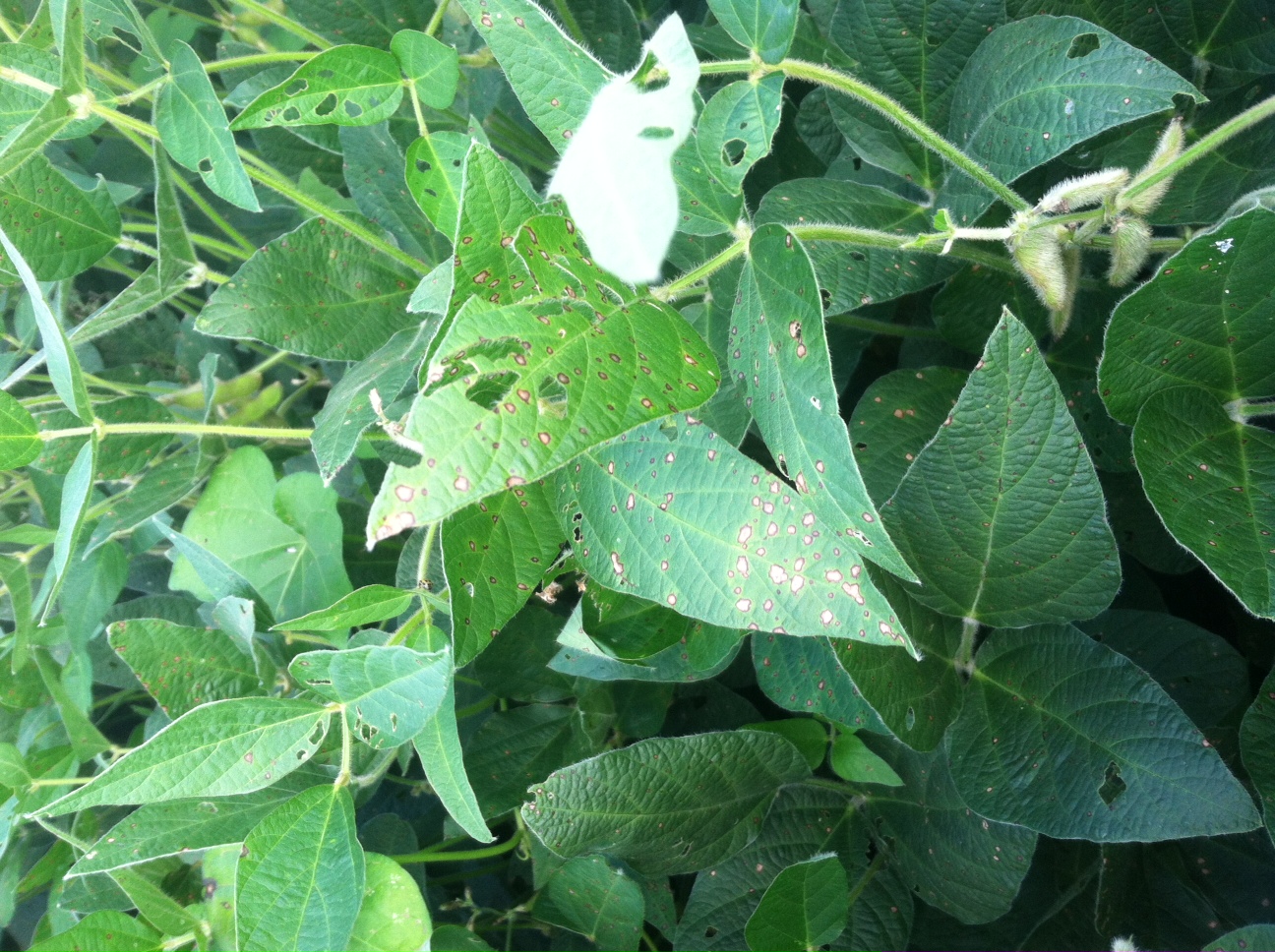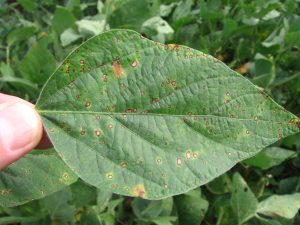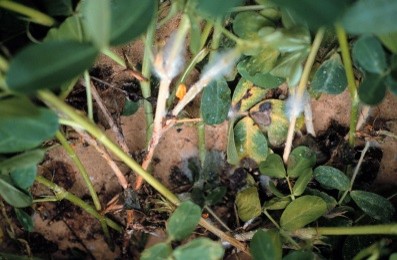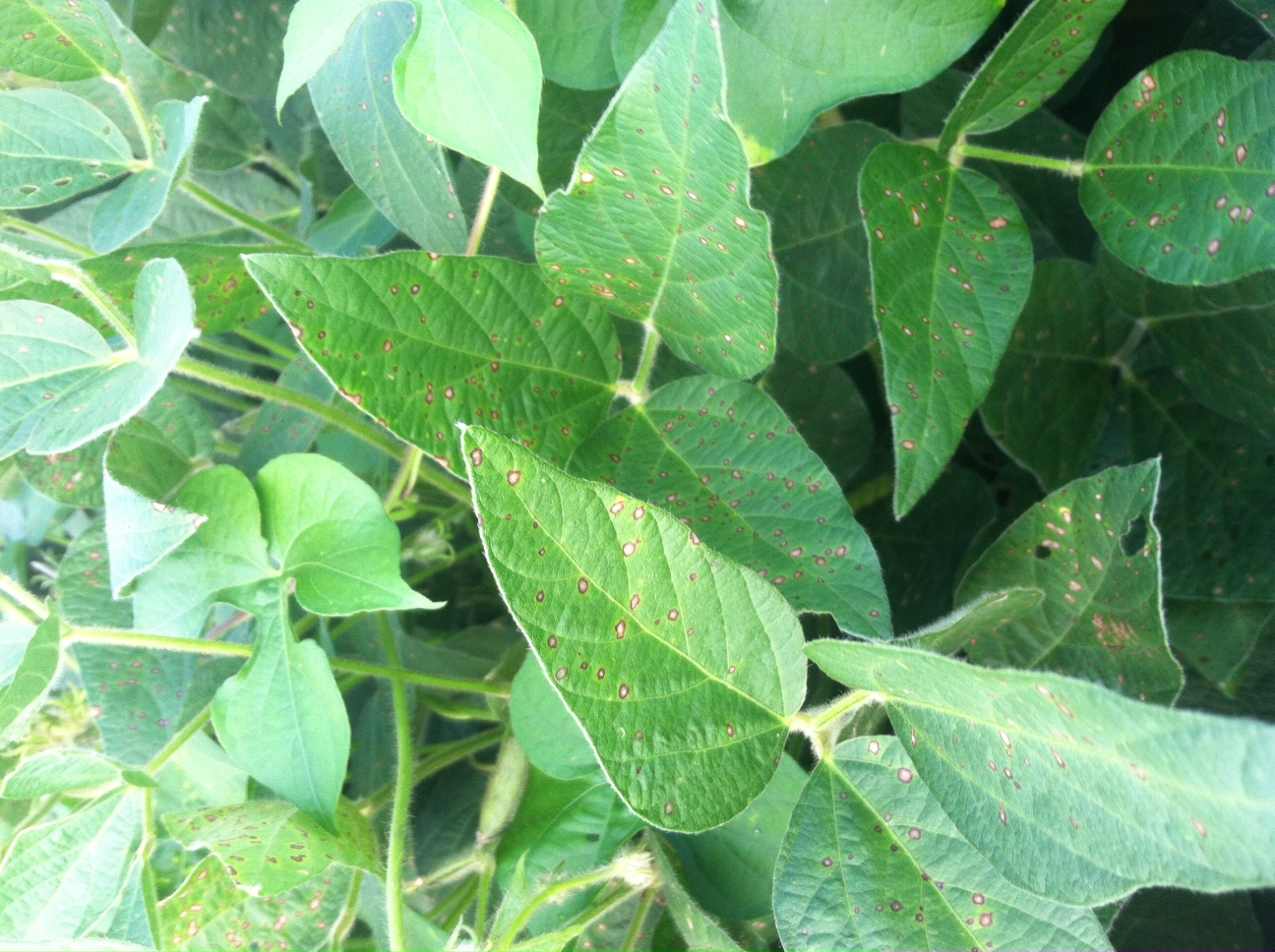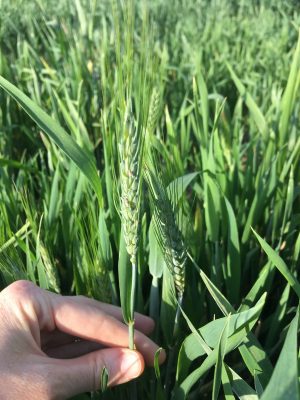First, I would like to introduce myself. I am Tim Bryant, the new assistant professor of entomology and extension specialist at the Tidewater AREC, in Suffolk, VA. I did my master’s degree here at the TAREC under Dr. Sally Taylor, and I am excited and grateful for the opportunity to come back and work with the farming community in Virginia. I am also looking forward to continuing to provide updates on this platform as regularly as we have updates to provide. Now, on to a quick update from my first few weeks on the job…
Soybean aphids have been reported in Mecklenburg and Prince George counties (First reports 8/28). Aphids can reproduce asexually, and are capable of rapid population growth under the right conditions, so close monitoring is important. Our threshold for managing soybean aphids is 250 per plant at R4 (full pod) or prior, and 1000+ at R5 (beginning seed) and beyond. The below image shows 300 aphids on a single leaflet as a point of reference (Photo credit: Roger Schmidt, University of Wisconsin-Madison, Bugwood.org). There is likely to be multiple developmental stages of aphids present at one time, and early stages are very small.

There are a couple key considerations for managing aphids; 1) they are highly susceptible to population crashes from natural enemies or weather events, and 2) broad-spectrum insecticide applications (i.e. pyrethroids) may kill aphids, but also the afore-mentioned beneficial insects. Eliminating beneficials can potentially flare up spider mites or other pests later on. If you think you may have an aphid problem, scout several areas of the field to estimate the number of aphids per plant and pay close attention to the number of beneficial insects present. Where we scouted for aphids, there were also large numbers of lady beetle adults and larvae, which are excellent aphid predators. If you reach the aphid threshold, sample again in 5-7 days to ensure the population has not crashed. Narrower spectrum insecticides (e.g. sivanto) may preserve some beneficial insects if an application for aphids is made. See our pest management guide (beginning on page “4-62”) for more details on labeled products, application rates, etc.
The below image shows a lady beetle larvae, which were found in abundance along with the aphids we are reporting on here, feeding on an aphid (Photo credit: Winston Beck, Iowa State University, Bugwood.org).
